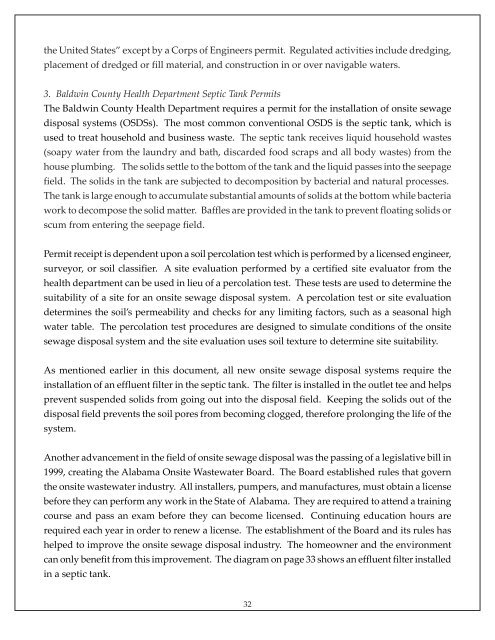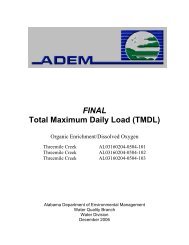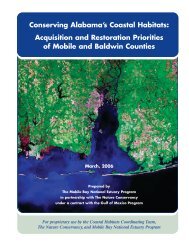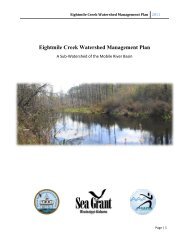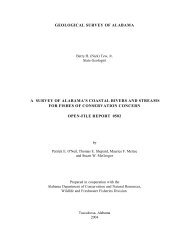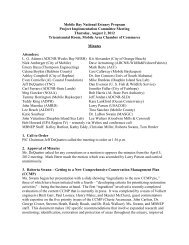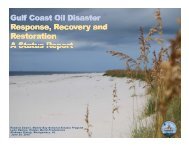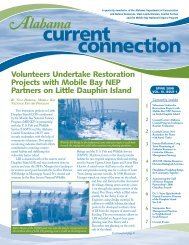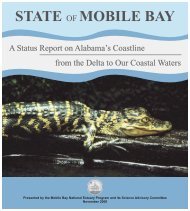Wolf Bay Plan Final - Mobile Bay National Estuary Program
Wolf Bay Plan Final - Mobile Bay National Estuary Program
Wolf Bay Plan Final - Mobile Bay National Estuary Program
- No tags were found...
Create successful ePaper yourself
Turn your PDF publications into a flip-book with our unique Google optimized e-Paper software.
the United States” except by a Corps of Engineers permit. Regulated activities include dredging,placement of dredged or fill material, and construction in or over navigable waters.3. Baldwin County Health Department Septic Tank PermitsThe Baldwin County Health Department requires a permit for the installation of onsite sewagedisposal systems (OSDSs). The most common conventional OSDS is the septic tank, which isused to treat household and business waste. The septic tank receives liquid household wastes(soapy water from the laundry and bath, discarded food scraps and all body wastes) from thehouse plumbing. The solids settle to the bottom of the tank and the liquid passes into the seepagefield. The solids in the tank are subjected to decomposition by bacterial and natural processes.The tank is large enough to accumulate substantial amounts of solids at the bottom while bacteriawork to decompose the solid matter. Baffles are provided in the tank to prevent floating solids orscum from entering the seepage field.Permit receipt is dependent upon a soil percolation test which is performed by a licensed engineer,surveyor, or soil classifier. A site evaluation performed by a certified site evaluator from thehealth department can be used in lieu of a percolation test. These tests are used to determine thesuitability of a site for an onsite sewage disposal system. A percolation test or site evaluationdetermines the soil’s permeability and checks for any limiting factors, such as a seasonal highwater table. The percolation test procedures are designed to simulate conditions of the onsitesewage disposal system and the site evaluation uses soil texture to determine site suitability.As mentioned earlier in this document, all new onsite sewage disposal systems require theinstallation of an effluent filter in the septic tank. The filter is installed in the outlet tee and helpsprevent suspended solids from going out into the disposal field. Keeping the solids out of thedisposal field prevents the soil pores from becoming clogged, therefore prolonging the life of thesystem.Another advancement in the field of onsite sewage disposal was the passing of a legislative bill in1999, creating the Alabama Onsite Wastewater Board. The Board established rules that governthe onsite wastewater industry. All installers, pumpers, and manufactures, must obtain a licensebefore they can perform any work in the State of Alabama. They are required to attend a trainingcourse and pass an exam before they can become licensed. Continuing education hours arerequired each year in order to renew a license. The establishment of the Board and its rules hashelped to improve the onsite sewage disposal industry. The homeowner and the environmentcan only benefit from this improvement. The diagram on page 33 shows an effluent filter installedin a septic tank.32


